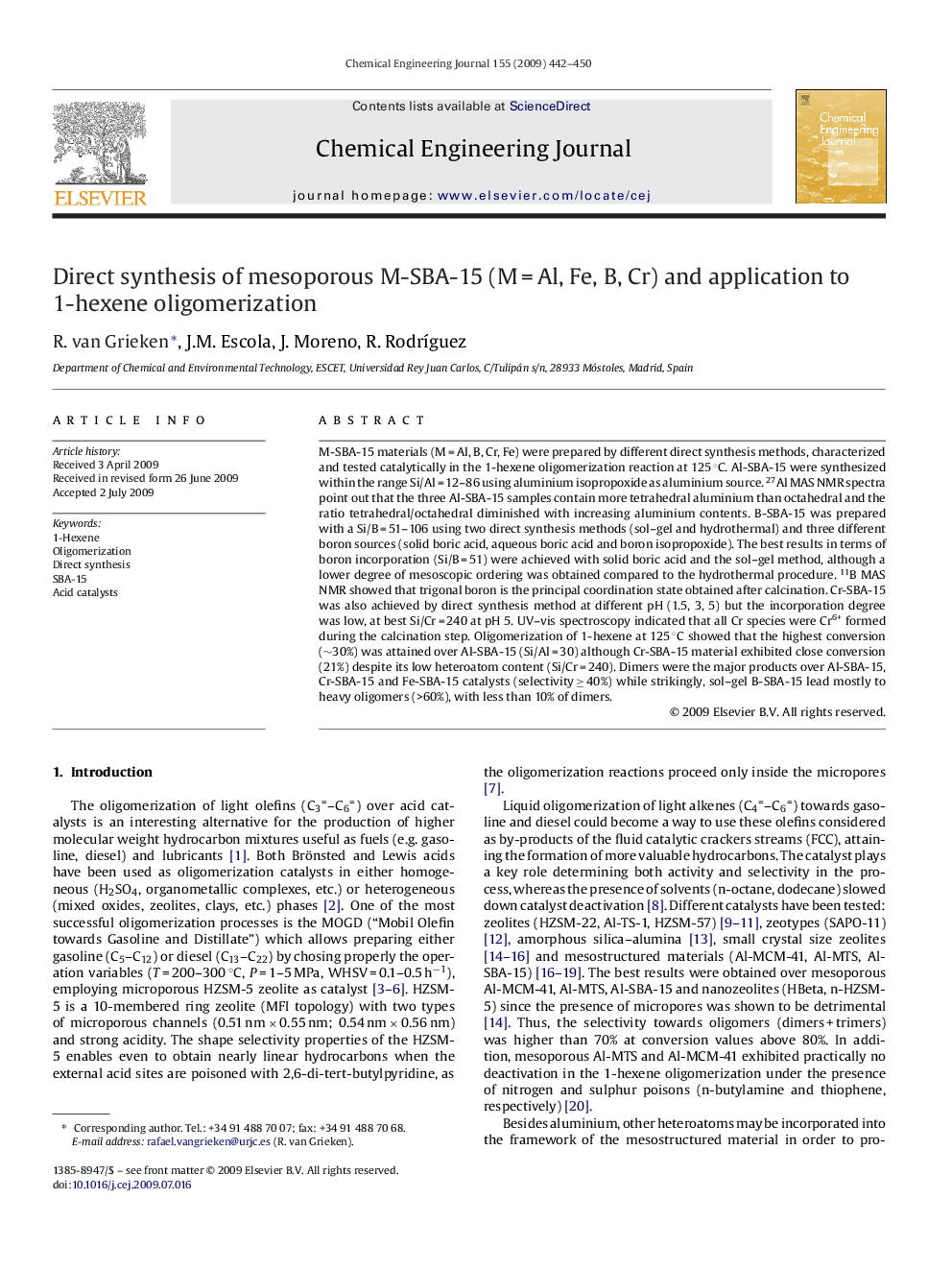| Article ID | Journal | Published Year | Pages | File Type |
|---|---|---|---|---|
| 153356 | Chemical Engineering Journal | 2009 | 9 Pages |
M-SBA-15 materials (M = Al, B, Cr, Fe) were prepared by different direct synthesis methods, characterized and tested catalytically in the 1-hexene oligomerization reaction at 125 °C. Al-SBA-15 were synthesized within the range Si/Al = 12–86 using aluminium isopropoxide as aluminium source. 27Al MAS NMR spectra point out that the three Al-SBA-15 samples contain more tetrahedral aluminium than octahedral and the ratio tetrahedral/octahedral diminished with increasing aluminium contents. B-SBA-15 was prepared with a Si/B = 51–106 using two direct synthesis methods (sol–gel and hydrothermal) and three different boron sources (solid boric acid, aqueous boric acid and boron isopropoxide). The best results in terms of boron incorporation (Si/B = 51) were achieved with solid boric acid and the sol–gel method, although a lower degree of mesoscopic ordering was obtained compared to the hydrothermal procedure. 11B MAS NMR showed that trigonal boron is the principal coordination state obtained after calcination. Cr-SBA-15 was also achieved by direct synthesis method at different pH (1.5, 3, 5) but the incorporation degree was low, at best Si/Cr = 240 at pH 5. UV–vis spectroscopy indicated that all Cr species were Cr6+ formed during the calcination step. Oligomerization of 1-hexene at 125 °C showed that the highest conversion (∼30%) was attained over Al-SBA-15 (Si/Al = 30) although Cr-SBA-15 material exhibited close conversion (21%) despite its low heteroatom content (Si/Cr = 240). Dimers were the major products over Al-SBA-15, Cr-SBA-15 and Fe-SBA-15 catalysts (selectivity ≥ 40%) while strikingly, sol–gel B-SBA-15 lead mostly to heavy oligomers (>60%), with less than 10% of dimers.
